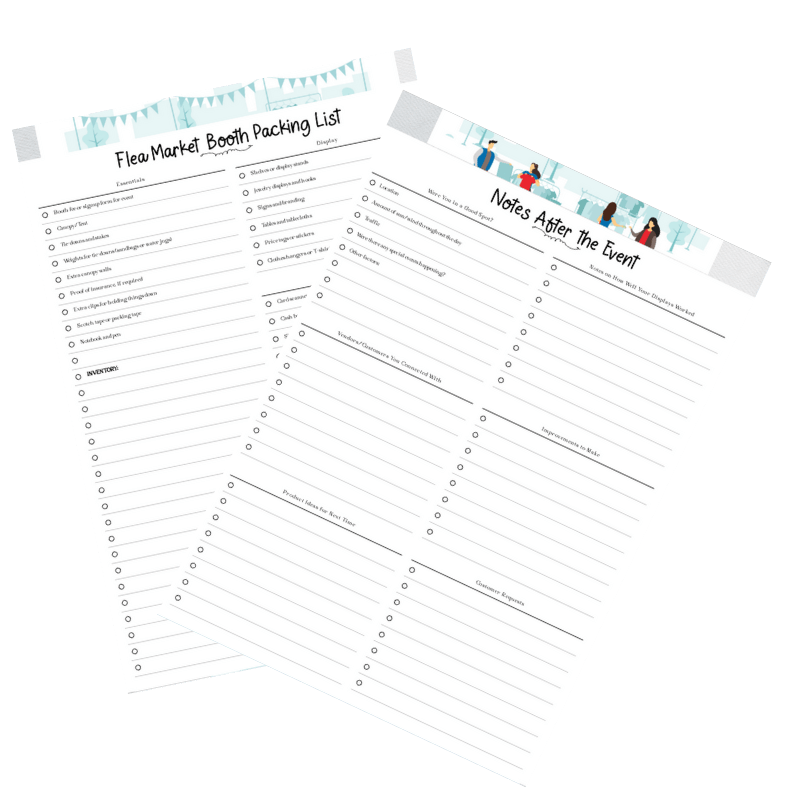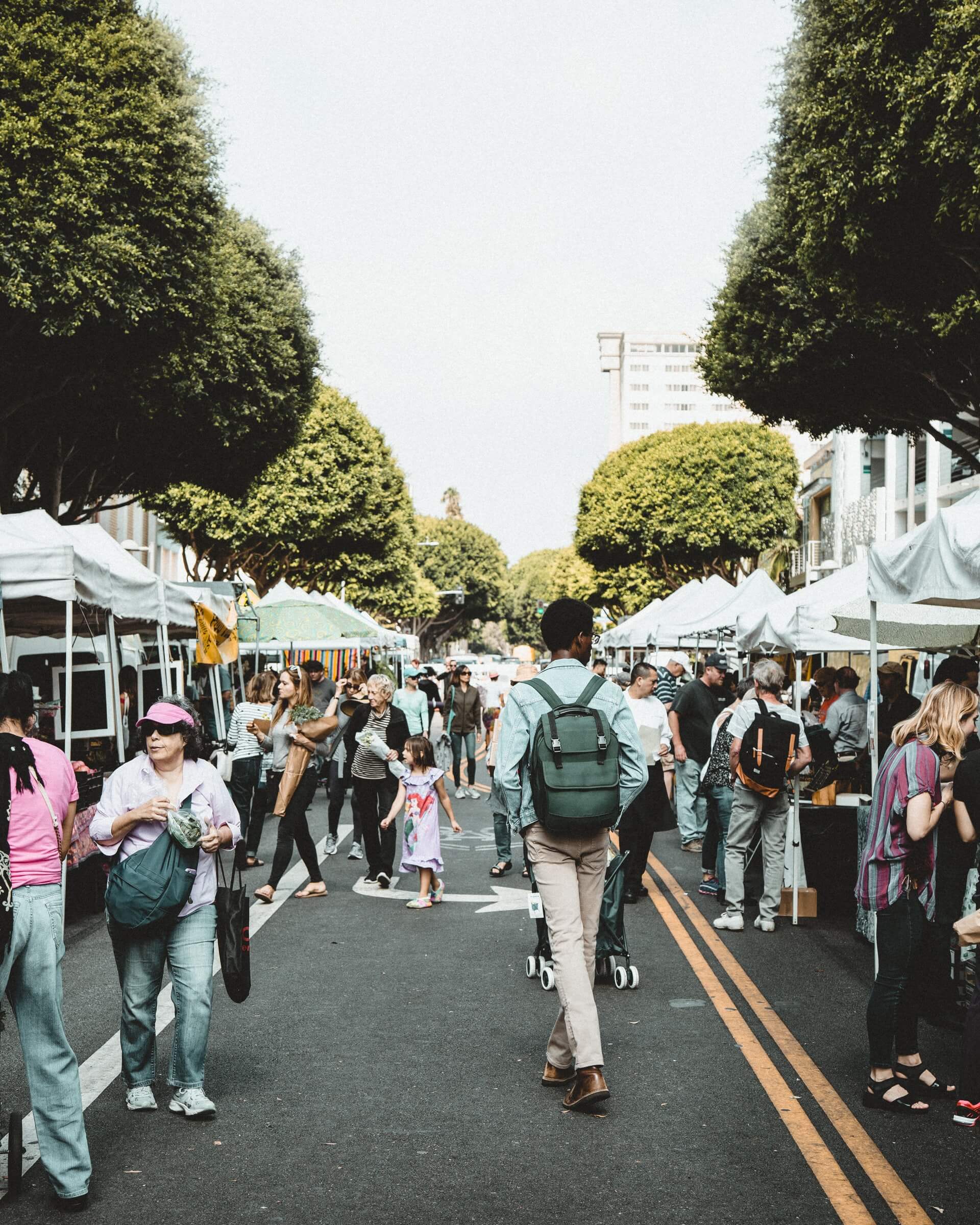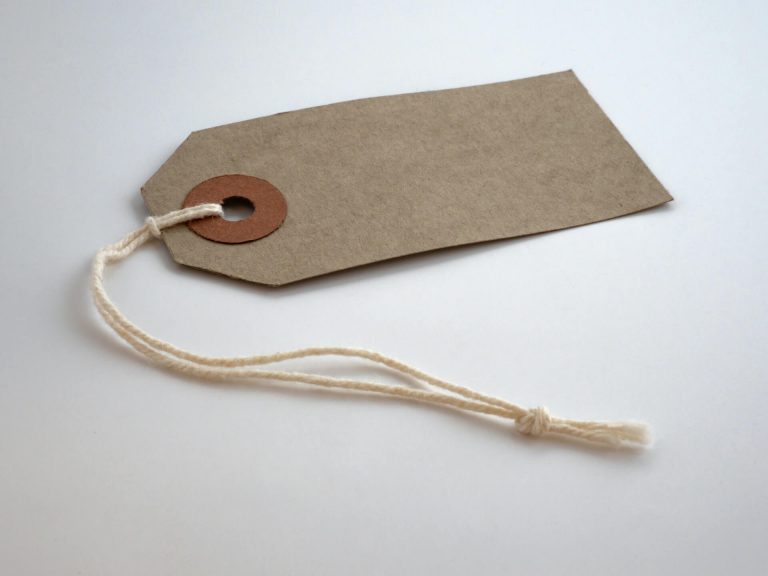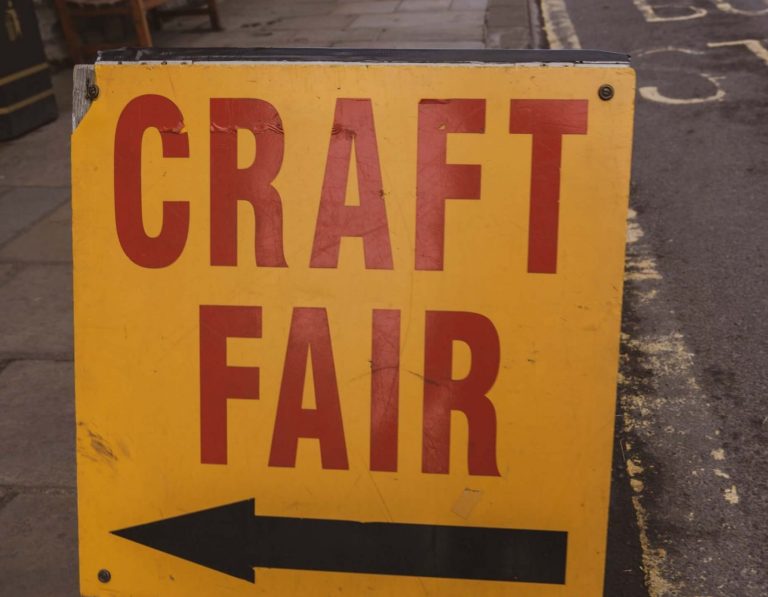Complete Guide to Selling Sublimation Products at a Flea Market
Local flea markets are great places to promote your sublimation printing business. You should see a good amount of steady traffic, and you'll receive immediate feedback on what types of items and designs will do well!
If you've never tried selling sublimation products at a flea market, read on! We'll share our favorite tips on how to get started.
Find a Flea Market Near You
The first step is finding a good location. Do some research online or ask around town, to see if there are any local flea markets or craft shows happening in the near future. These might be one-time events, seasonal markets, or permanent venues.
If you don’t have a traditional flea market, look for farmers' markets or craft fairs. These might be weekly or monthly, or sometimes they will even be a daily event during a certain season.
Watch for festivals in your town, as well. Anywhere you have seen someone selling crafts or small business items from a booth, you can probably ask about reserving a space.
Events can vary widely in size, so choose something that feels comfortable to you, based on the crowd size and the amount of inventory you will have prepared, and then find out what it will take to reserve a space.
Before You Go – Things to Consider
Find out about any fees or costs to set up a spot at your flea market. They may have a website with the information, or you may have to ask at the market’s office, or ask other vendors!
Do you have enough product to sell? If not, or if you’re feeling nervous, could you split the cost and responsibility of a booth with a friend?
Compare the investment of both time and money. Will the event be open for a full day? The entire weekend? Is your flea market busy? Ours is held on the state fairgrounds, which also hosts a ton of events throughout the year. This draws in people who weren’t necessarily intending to shop!
What about indoor vs. outdoor spaces? Having an indoor setup can be nice, especially if you are able to leave your inventory there, but the costs will probably be higher, and you will be committing to being there regularly.
Our local flea market is open almost year round, with both indoor and outdoor spaces available for vendors to rent. It also has a yard sale section, for those who may just want to set up as a one-time thing. If you decide you'd like to sell there regularly, there's an area where you can reserve the same spot every week. There are also more expensive indoor spaces, but they ask that you be a regular who is familiar with the market. You also have to be present in person while they are open.
Don't be discouraged if your flea market has policies like this in place; they help create a better experience for customers, and make sure the spots are filled – this keeps the crowds coming back, which means more eyes on your products!

Visit First
Go check out your flea market in person. Visit as a shopper, and check out the booths that are set up, as well as the types of items and displays that are there.
Pay attention to what other shoppers are doing. What they stop to look at or pick up. What they buy.
This is also your chance to see if you have competition: is someone there already selling the items you offer? Is there enough space for both of you? Maybe you have a different design style, or different types of items that you could offer.
Talk to the vendors who are already there. Do they like it? Are they doing well? Do they set up in the same spot? Are they there every week?
Starting a conversation might give you valuable information, like the best times of year to be there. Or maybe there is a big event coming up, that is likely to draw your ideal customer.
Let's Do This
So you’ve decided to rent a space. Are you just going to show up and start selling? Do some planning in advance, and save yourself some time and stress.
Some questions to ask:
How big will your space be?
Are there restrictions on what you can use for shelter or display?
Are there rules about set-up and take-down times? For example, do you have to keep your booth set up until they've closed for the day?
Do you need access to electricity? Is it available at your booth’s location?
Shelter
What will you use for shelter from the weather? A pop-up canopy is pretty standard at 10 ft. by 10 ft. wide, and will give you some shade. In fact, you can buy extra walls to provide more shade, or to separate your display space from neighboring vendors.
You’ll want to have weights to hold it down in case of wind, though – I’ve been to more than one event where a sudden strong breeze caused unsecured canopies to take off like Dorothy’s house in the Wizard of Oz!
Canopies often come with bags that you can fill with play sand from your local hardware store. You can also attach the tie-downs to the handles of gallon-sized water jugs.
Product Display
How will you display your products? Do you have branding that identifies your business?
You will want to have at least one sign that is large enough to give people a clear idea of what you’re selling. You can even make this with sublimation printing – use a large piece of fabric or a polyester tablecloth, and print up your logo and business name!
Pricing Your Items
Do this ahead of time. Mark your prices clearly, and don't undervalue your work!
You want to be competitive with other vendors, but you also want to make a profit. A popular rule of thumb is to price your items at 2-3 times the cost of materials, then factor in the time spent making the item.
It's not always that simple, and there are lots of factors to consider. We discuss several of them in our article on pricing your sublimation products.
Taking Payments
How will you accept payments?
You'll want to have bills and coins available to make change (a locking cash box will be a handy thing to add to your setup kit), and a way to keep track of sales. This could be a notebook. If you are required to charge sales tax in your state, keep track of that, too, so it will be easier to report it later.
Your customers may not have cash with them. They love your stuff, but have already spent all of their cash on kettle corn and snow cones! Make it easier for them by having a display with payment options: scannable QR codes for payment apps like Square, Paypal, Venmo, CashApp, or whatever you’re comfortable accepting.
If you set up an account with a company like Square, they will send you a free reader device for your specific type of phone, that allows customers to swipe their card – it connects to your cell phone through the headphone jack or Lightning port; you install the company's app and connect your account to accept payments.
Once you’re regularly selling at events, you may want to invest in the Square Terminal, which lets customers swipe, tap, or insert their card, shows the transaction on the screen, and can even print a receipt, if necessary! It’s pretty handy, and looks professional.
It will need an internet connection – we use the hotspot on our phone, turning it on whenever we ring up a customer, to save the phone's battery power.
Packaging
How will you send products home with your customers? Do you have bags? Boxes for breakables or tumblers? Straws or other accessories that go with the items?
Print up some business cards, sales flyers, and care cards or stickers to include in the bag. You want your customers to be able to find your website or business page when they get home, because all of their family and friends will want to know where they can buy your stuff, too!
You never know what may come from what seems like a one-time purchase: At my first local event, I met another vendor who bought a few things, placed an order for more, and then we developed a business relationship, where we sell and promote each other’s products!
Storage
How will you transport and store your inventory? Many people use plastic totes/bins, which can slide under a table and hold extra inventory that is not on display. These work great for transporting items, as well as being fairly weather-proof once they are closed.
Have a Set-up Kit or Checklist
This should include any gear, change (bills and coins), snacks, drinks, sunscreen, bug spray, stakes for the canopy, tables, tablecloths, canopy walls, an easy system for stowing/packaging/protecting items from weather changes, a power bank for your cell phone or card scanner, and CHAIRS!
We bring camp chairs if we'll be on grass. I also like to bring my folding stool that is about two feet tall, because I like to be standing when I talk to customers, and getting up and down from a chair becomes a production. I'd rather rest my feet occasionally, but still be able to move easily to standing.
If you have a booth where you will be actively making items, the stool also makes it easy to work at a table, and fits under the table if you need to tuck it away.

Need a hand at your next event?
Stay organized with our free set of checklists – we'll help you get ready for your next flea market or vendor event!
Now What?
So you're all set up, and ready for customers. You've prepped everything that can be prepped, put your stuff out to look its best, and prayed to the weather gods. Show me the money!
Sales
The two biggest factors in drawing a customer in to look at your items are:
Display/catching their eye…
This is why you want your stuff to look great, in an arrangement that attracts attention and draws in customers. You also want to display that business logo we talked about – who you are and what you're offering should be clear!
Before you go to the flea market, play with different ways of arranging your booth. Set up your canopy and tables in your back yard, to see what works for you.
Are items easy to see when displayed on a table? Would some things be more visible if they were on a shelf or hanging from display hooks? Consider that customers might be more likely to buy something they can pick up and handle.
Shirts can be folded and stacked with the designs showing, or you can build T-shirt stands to display them. You can buy motorized display stands for tumblers, or build shelves to give them some height.
Try mixed displays: do certain items look better together? Would they sell well as a matching gift set?
You will think of even more improvements while you're actually at the flea market – have fun changing things around! Just make sure your items are clearly priced and your designs are easy to see or read.
…and interaction with you.
This interaction starts before you even say anything or possibly before you know they’re there!
I’m a badge-wearing member of the introverts’ club, but I try to interact with customers, by meeting them where they are. They are most likely browsing, not necessarily looking to spend money, but not opposed to it.
Say hello. This may be the only thing you say to them, but do offer them some sort of greeting – “Hi! Howdy! Hello! Good morning! How are you?(if you’re in Northern New Mexico)”. This simple thing opens you up to an exchange. They respond, or not (which is still a response). You smile, they smile. You are exchanging.
Now, they should feel invited in to see what you’re selling. They may ask you a question, or point out something to the person they're with. This is your chance to engage them.
If your prices are clearly marked, you don't have to bring up money. Instead, talk about the sublimation printing process, or why you chose a particular design. You can show them a similar item or matching design.
Here's a tip: If you can get something in a customer's hands, they are more likely to make a purchase. If they ask about an item they’re looking for, don't just point it out – place it in their hands!
Crowds
Many factors will affect the size of the crowd, including the weather. On nice days, people are out and about. That doesn’t mean you won’t get traffic on a cloudy or rainy day, but the patterns will definitely be different.
Popular locations or seasonal/holiday shopping can also bring more people your way.
If you expect a crazy-busy day, or are worried that the size of the crowd could be overwhelming, simplify!
This also applies when you are just starting out and want to get a feel for the location.
Consider leaving some of your inventory at home. Or if you do bring it along, don’t display it all. Keep it simple, have your prices clearly marked, and have a grab-and-go method of sending items home with your paying customers.
What about theft?
Hopefully this won't be an issue, but shoplifting does happen. An ounce of prevention will pay off, here.
Greet your customers. This isn't just about sales. It also lets potential shoplifters know that you are paying attention, and that you've seen what they look like. It also adds a human connection – they would be stealing from a real person, not a faceless store.
Pay attention. Set up your space so that you have a full view of your displays from your seat. When you are talking with a customer, try to keep an eye on the rest of your booth.
Don't make it easy to walk away with your products. If you have jewelry or other small items for sale, display them in larger packaging – even a plastic bag makes it more noticeable if someone tries to palm a pair of earrings.
You can also consider using display cases for valuable items.
Dealing with Haggling
Speaking of customers…some of them like to find a bargain, and they may try to get you to negotiate on your prices.
The easiest way to avoid haggling (especially at a flea market, where this is sometimes expected) is to get ahead of it. Present yourself as a store. People don’t haggle at stores.
Clearly mark your prices, using price tags if you have them. That way the buyer can’t start the conversation from a place of “how much will you take for these?”
That’s not to say you can’t offer a deal! “Buy three, get one free!” “Today only, special discount!” Just like you would in a shop.
This really comes back to presentation. If someone insists on haggling, just smile, point out the price, and mention your special offer. This is your business, not a yard sale.
Taking Breaks
Your stomach is growling, and the smell of delicious food is coming from somewhere. This is where it comes in handy to have someone with you, obviously! But if you are setting up solo, get to know your neighbors! You can cover for each other if one of you needs a restroom break, or wants to check out a food truck!
Manage Your Expectations
Look at this as an experiment, a chance to test out your set up and your displays, and an opportunity to get feedback on what you’re selling.
There are so many factors that you can’t control about events, including the time of day, how windy it is, the temperature, whether it rains or there’s a major event happening on the other side of town.
Yes, this can affect sales, but what you’ll really be working on is how to sell over time, and in spite of those factors.
Last, but not least…
Have Fun
This is probably the most important thing! You've made it this far, and hopefully you're about to crush your sales goals for the event! So enjoy yourself, be friendly and open, and don’t take anything too seriously. No worries, just focus on having a great day and connecting with your customers.
These are just a few things to keep in mind as you get started selling at flea markets and similar events. Have you sold at flea markets before? What tips would you add? Share your thoughts in the comments!



